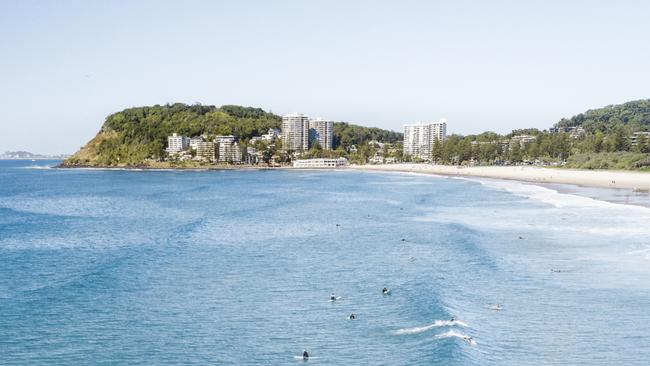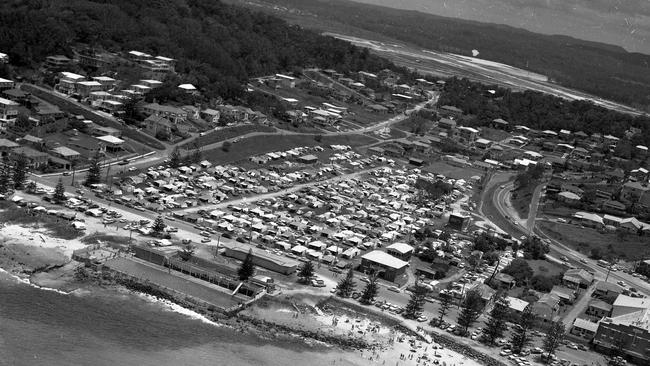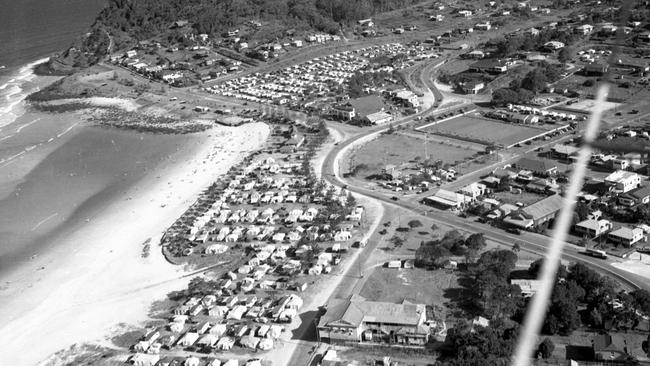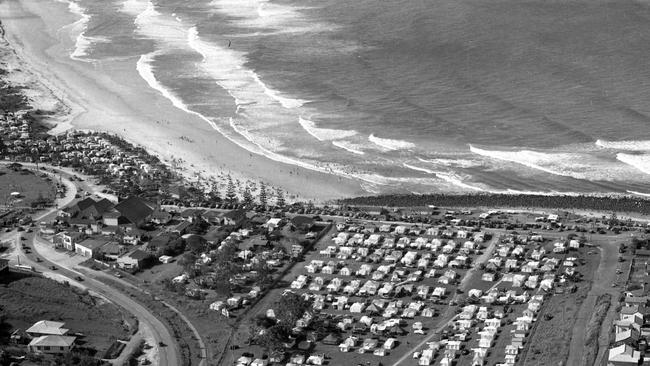Burleigh Heads property from flop to on top as exclusive suburb
Burleigh Heads is breaking property records as it becomes too expensive for the average buyer, morphing into a hyper-exclusive suburb like Bondi. But it wasn’t always that way.
Property
Don't miss out on the headlines from Property. Followed categories will be added to My News.
IT’S been a long and strange journey for Burleigh Heads, from quiet seaside village to “Queensland’s answer to Bondi Beach”.
Burleigh today is the hottest property market on the Gold Coast.
The latest big name to move to the beachside enclave is Aussie tennis great and US Open champion Lleyton Hewitt and his wife Bec after snaring the city’s “most Instafamous house”, The Palms at 13 Deodar Drive, for $4.3m.

It sold for $3.75m four months earlier.
And the changes are set to keep rolling, with new hotel and residential towers on the rise and the light rail extension set to finally get underway.
It’s a far cry from the sleepy seaside village which began to coalesce in the late 19th century.
The area was declared a township in 1871, more than 30 years after it was surveyed and a decade after being named in 1860 by surveyor Robert Dixon as “Burly Head”.

It was suggested in history books that the name referred to the immense size of what today is known as Burleigh Headland.
Nearby Tallebudgera Creek was dubbed “the River Perry”.
Burly Head was changed to Burleigh and the first 65 parcels were auctioned in July 1872.
More land was sold by the end of the 1870s and the first hotel was built the following decade.
Fast-forward to the early 20th century and Burleigh was a thriving village with a range of popular attractions.
The Deluxe Theatre was built on Burleigh Heads’ Goodwin Terrace in 1930, nearly 18 years after the Gold Coast’s first cinema in Southport, and was designed by William Fradgley.
It was part of mass development in the fledgling southern suburb’s foreshore in the years after the end of World War I in 1918.
The theatre had capacity for 600 seats and wowed audiences with silent films before its Western Electric sound plant was installed in 1931.
A roller-skating rink was also built on the Burleigh foreshore, but it was destroyed by a cyclone in 1954.

In the early 1940s, Surfers Paradise pioneer Jim Cavill pitched the idea of a beachside water baths at Burleigh Head, but the idea failed to get the tick of approval from the Nerang Shire Council.
Fast-forward to 1953 and porpoise pool legend Jack Evans succeeded in getting the then-South Coast Council to approve his idea for a pool.
It opened on December 30 that year and soon became a popular landmark.
The base of the pool survives today as part of the Burleigh Pavilion.
The beachfront campgrounds on Goodwin Terrace became one of the most sought-after holiday destinations, with unprecedented access to the water.
But the quiet life couldn’t last.

By the 1980s, more than a century after the first land surveys, Burleigh found itself at the centre of a property boom as high-rise towers arrived.
From the Gemini Court towers, controversially approved by “Minister for Everything” Russ Hinze in 1982, to Burleigh Gardens North and new hotels, real estate figures of the era saw it as the future of the Gold Coast.
At the time a unit in Burleigh Heads cost $124,000.
PRD Realty’s Andrew Tamandl told The Telegraph in July 1984 that the high-rise redevelopment would transform Burleigh.
“In the past two years, the Gold Coast, as a city, has come into its own,’’ he said.

“Up to two years ago, and certainly before the 1980s, the Gold Coast was just Surfers Paradise.
“But now, more and more people do not automatically buy in Surfers.
“They are not opposed to the other high-rise areas and Surfers will have to work if it is ever to regain its former position.’’

Despite this, predictions of Burleigh as a hotspot failed the pan out and it was long regarded as a flop.
Property prices remained stubbornly low through the 1990s and into the 2000s as cashed-up buyers took their business to Mermaid Beach and Hedges Ave.
A 2000 study by the Real Estate Institute of Queensland showed 1069 units and 999 houses were sold in Burleigh between 1997 and 2000 achieving a combined total value of almost $307m.
The median house price at the time was $236,500 while the median unit price was $168,000.

The area finally took off in the early 2000s property boom which heralded a crop of new towers.
A 2001 Bulletin report declared the Gold Coast to be riding its biggest real estate boom since the mid-1980s, with the average house in Burleigh Heads rising nearly 20 per cent in six months.
Its close access to its famous beach was cited as a big factor.
It took another 20 years for Burleigh to be named “Queensland’s answer to Bondi Beach” but the early 2000s boom planted the seeds of a major shift now beginning to bloom as the Burleigh of the future takes shape in the 2020s.
More Coverage
Originally published as Burleigh Heads property from flop to on top as exclusive suburb





